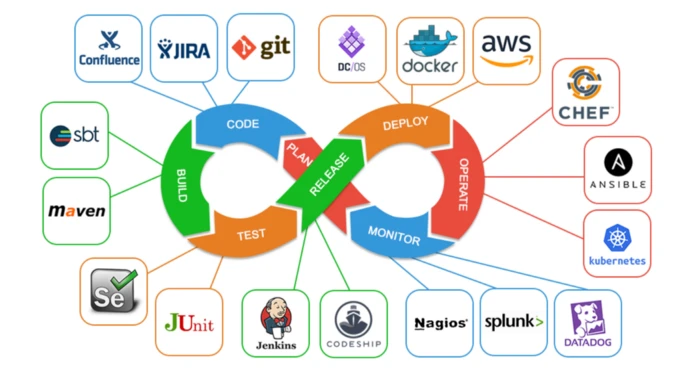DevOps best practices include agile project management, automation, CI/CD, monitoring, observability, and continuous feedback.
DevOps is the combination of cultural philosophies, practices, and tools that improves an organization's capacity to deliver applications and services at high velocity: evolving and improving products more quickly than organizations using conventional infrastructure management and software development procedures. Organizations may provide better customer service and compete more successfully in the market because of this speed.
DevOps implementation spans every component of an IT ecosystem and necessitates an organizational-wide culture transformation.
According to Puppet’s 2018 State of DevOps report, elite performers deploy code 46 times more often, have a 2555 faster lead time from code commit to deployment, have a 7 times lower change failure rate and are 2604 times faster to recover from incidents.
DevOps improves quality as well as speed to market, with exceptional teams having a change failure rate seven times lower than low-performing teams.

Agile project management is an iterative method to project delivery that spans the project's life cycle. Agile projects, as opposed to a basic linear Waterfall approach, are made up of a number of smaller cycles. Each of them is a mini project, with stages of design, development, testing, and deployment inside a pre-defined scope of work.
A potentially shippable product increment is delivered at the end of each cycle. As a result, new features are added to the product with each iteration, resulting in progressive project expansion. The risks of producing a possibly failing product are considerably reduced when features are evaluated earlier.
Automation in DevOps refers to the practice of automating various aspects of the software development and IT operations lifecycle. It is a core principle of DevOps that aims to streamline and accelerate the delivery of software by reducing manual tasks, improving efficiency, and ensuring consistency. Automation plays a critical role in achieving the goals of DevOps, such as faster and more reliable software delivery, improved collaboration between development and operations teams, and enhanced feedback loops.
Infrastructure as Code (IaC) is a fundamental concept in DevOps that involves managing and provisioning infrastructure using code and automation. With IaC, you treat infrastructure components such as servers, networks, and storage as code, which allows you to define, configure, and deploy infrastructure resources in a predictable and consistent manner. This approach offers several benefits in the context of DevOps:
There are several tools and approaches for implementing IaC in DevOps, including:
DevOps and any modern software development practice would be incomplete without CI/CD. Through built-in automation, testing, and collaboration, a purpose-built CI/CD platform can maximize development time by raising an organization's productivity, increasing efficiency, and optimizing workflows.
Monitoring and logging are the unsung heroes of DevOps. They enable you to ensure the reliability and performance of your applications, respond to issues promptly, and continuously improve your software. By adopting best practices and employing the right tools, you can empower your DevOps teams to deliver top-notch software and services.
Monitoring and logging provide real-time insight into the health and performance of your applications. This is crucial for identifying issues promptly and ensuring that your applications meet their Service Level Objectives (SLOs).
By monitoring and logging, you can proactively detect and resolve issues before they escalate, minimizing downtime and user disruption.
Logs and monitoring data help in root cause analysis, enabling you to identify why an issue occurred and how to prevent it in the future.
Monitor servers, networks, and databases for metrics like CPU usage, memory consumption, and network latency. Tools like Prometheus and Nagios are valuable for this.
Use APM tools like New Relic or AppDynamics to track the performance of your applications, including response times, transaction traces, and error rates.
Employ user experience monitoring tools to capture how real users interact with your application. This provides insights into user behavior and any issues they might face.
Implement a centralized logging system, where logs from various components and microservices are aggregated and stored in a central repository. Elasticsearch and Logstash (ELK) stack are popular choices for this.
Use structured logging to make log data more readable and filterable. Log entries should include relevant metadata, such as timestamps, severity levels, and source components.
Pay special attention to error logging. Log all application errors, exceptions, and failures. This data is essential for troubleshooting and improvement.


